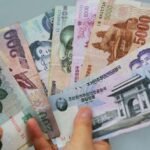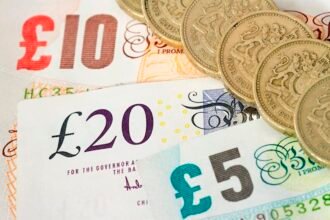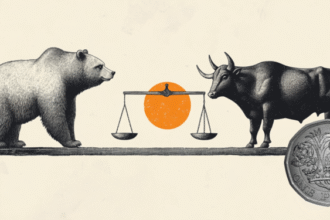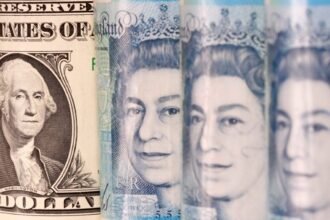- GBP/USD consolidates weekly gains above 1.3700 on Friday.
- The technical outlook suggests that there is room for technical correction.
- Markets await May PCE inflation data from the US.
GBP/USD extended its weekly rally and reached its highest level since October 2021 at 1.3770 on Thursday. The pair stays in a consolidation phase in the European session on Friday and fluctuates slightly below 1.3750.
British Pound PRICE This week
The table below shows the percentage change of British Pound (GBP) against listed major currencies this week. British Pound was the strongest against the US Dollar.
| USD | EUR | GBP | JPY | CAD | AUD | NZD | CHF | |
|---|---|---|---|---|---|---|---|---|
| USD | -2.09% | -2.37% | -1.43% | -0.69% | -1.56% | -1.80% | -2.31% | |
| EUR | 2.09% | -0.31% | 0.71% | 1.44% | 0.49% | 0.30% | -0.26% | |
| GBP | 2.37% | 0.31% | 1.07% | 1.75% | 0.80% | 0.61% | 0.04% | |
| JPY | 1.43% | -0.71% | -1.07% | 0.74% | -0.17% | -0.32% | -0.98% | |
| CAD | 0.69% | -1.44% | -1.75% | -0.74% | -0.84% | -1.12% | -1.67% | |
| AUD | 1.56% | -0.49% | -0.80% | 0.17% | 0.84% | -0.21% | -0.74% | |
| NZD | 1.80% | -0.30% | -0.61% | 0.32% | 1.12% | 0.21% | -0.56% | |
| CHF | 2.31% | 0.26% | -0.04% | 0.98% | 1.67% | 0.74% | 0.56% |
The heat map shows percentage changes of major currencies against each other. The base currency is picked from the left column, while the quote currency is picked from the top row. For example, if you pick the British Pound from the left column and move along the horizontal line to the US Dollar, the percentage change displayed in the box will represent GBP (base)/USD (quote).
The broad-based selling pressure surrounding the US Dollar (USD) fuelled GBP/USD’s climb on Thursday. News suggesting that United States (US) President Donald Trump is planning to announce Federal Reserve (Fed) Chairman Jerome Powell’s replacement early to undermine him triggered a USD selloff. Additionally, mixed macroeconomic data releases from the US further weighed on the currency.
The US Bureau of Economic Analysis announced on Thursday that the Gross Domestic Product (GDP) contracted at an annual rate of 0.5%, compared to the 0.2% contraction reported in the previous estimate. Other data from the US showed that weekly Initial Jobless Claims declined to 236,000 from 245,000 in the previous week and Durable Goods Orders rose by 16.4% in May, surpassing the market expectation of 8.5%.
Later in the session, the Personal Consumption Expenditures (PCE) Price Index data, the Fed’s preferred gauge of inflation, for May will be featured in the US economic calendar. Markets expect the monthly core PCE Price Index, which excludes volatile food and energy prices, to rise 0.1%. The market reaction to this data is likely to be straightforward and remain short-lived. A stronger-than-anticipated increase could support the USD in the immediate term.
Investors will also pay close attention to the changes in risk perception heading into the weekend. At the time of press, US stock index futures were up about 0.3%. A continuation of the risk rally could make it difficult for the USD to find demand and allow GBP/USD to inch higher.
GBP/USD Technical Analysis

The Relative Strength Index (RSI) indicator on the 4-hour chart started to edge lower after rising above 70 on Thursday, suggesting that GBP/USD is in a correctional phase before extending its uptrend.
On the upside, interim resistance seems to have formed at 1.3750 ahead of 1.3790-1.3800 (upper limit of the ascending channel, static level) and 1.3860 (static level). Supports could be seen at 1.3700 (static level, round level), 1.3630 (mid-point of the ascending channel) and 1.3600 (static level).
Pound Sterling FAQs
The Pound Sterling (GBP) is the oldest currency in the world (886 AD) and the official currency of the United Kingdom. It is the fourth most traded unit for foreign exchange (FX) in the world, accounting for 12% of all transactions, averaging $630 billion a day, according to 2022 data.
Its key trading pairs are GBP/USD, also known as ‘Cable’, which accounts for 11% of FX, GBP/JPY, or the ‘Dragon’ as it is known by traders (3%), and EUR/GBP (2%). The Pound Sterling is issued by the Bank of England (BoE).
The single most important factor influencing the value of the Pound Sterling is monetary policy decided by the Bank of England. The BoE bases its decisions on whether it has achieved its primary goal of “price stability” – a steady inflation rate of around 2%. Its primary tool for achieving this is the adjustment of interest rates.
When inflation is too high, the BoE will try to rein it in by raising interest rates, making it more expensive for people and businesses to access credit. This is generally positive for GBP, as higher interest rates make the UK a more attractive place for global investors to park their money.
When inflation falls too low it is a sign economic growth is slowing. In this scenario, the BoE will consider lowering interest rates to cheapen credit so businesses will borrow more to invest in growth-generating projects.
Data releases gauge the health of the economy and can impact the value of the Pound Sterling. Indicators such as GDP, Manufacturing and Services PMIs, and employment can all influence the direction of the GBP.
A strong economy is good for Sterling. Not only does it attract more foreign investment but it may encourage the BoE to put up interest rates, which will directly strengthen GBP. Otherwise, if economic data is weak, the Pound Sterling is likely to fall.
Another significant data release for the Pound Sterling is the Trade Balance. This indicator measures the difference between what a country earns from its exports and what it spends on imports over a given period.
If a country produces highly sought-after exports, its currency will benefit purely from the extra demand created from foreign buyers seeking to purchase these goods. Therefore, a positive net Trade Balance strengthens a currency and vice versa for a negative balance.





















